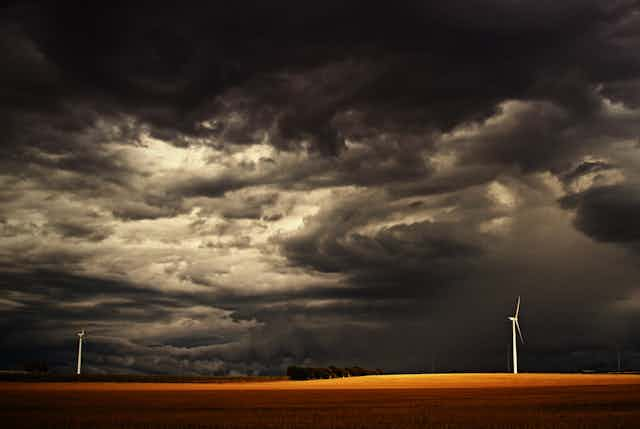The Australian Medical Association has released a statement once again affirming that there is no evidence that wind farms harm human health.
Geoffrey Dobb, chair of the AMA’s Public Health Committee, said: “The available Australian and international evidence does not support the view that wind farms cause adverse health effects.”
However, the statement did acknowledge that:
People living near wind farms who experience adverse health or wellbeing may well do so because of heightened anxiety or negative perceptions about wind farms.
These conclusions confirm the overwhelming body of evidence that suggests so-called “wind turbine syndrome”, or WTS, is caused by psychological, rather than physiological, factors. As Simon Chapman has argued, WTS appears to be a classic psycho-social - or psychogenic - illness.
While many in the scientific community are inclined to believe that the physiological facts will solve everything, this is a dangerously naive view. WTS sufferers are not magically cured by the mounting pile of this kind of scientific evidence. It may even be possible that health effects get worse the more people are told they’re not really sick.
Hostile debate
Last month, the National Health and Medical Research Council released its long-awaited Systematic Review and Draft Information Paper on the Human Health Effects of Wind Turbines.
Speaking at the time, NHMRC chief executive Warwick Anderson called on the public to make submissions about any research the review had missed.
The NHMRC’s goal in this review - and its subsequent call for submissions - reflects a determination, once again, to “establish the facts”.
Yet the council seems to accept only physiological facts as relevant.
The online submission process only allows space to answer four specific questions, regarding peer-reviewed research published since the last review’s 2012 cut-off.
There is no room to address the complex social and psychological factors that appear to underpin WTS, as shown by the work of University of Sydney’s Simon Chapman and Auckland University’s Fiona Crichton.
Anti-wind groups dismiss Chapman and Crichton’s conclusions. But these studies are extremely useful in looking at the power of people’s expectations and the influence of information spread by these campaign groups. The evidence suggests that the “nocebo effect” (the opposite of a placebo) is a crucial factor in generating WTS symptoms.
Pragmatic approach
As well as establishing whether there is a cause-effect relationship between wind turbines and health, the NHMRC should be working towards solutions to the problem.
Yet if we are to do so, then bodies like the AMA and the NHMRC must move beyond a focus on the purely physiological.
Treating social or psychogenic factors as a mere afterthought is going to achieve precisely nothing.
This graphic, posted on an anti-wind Twitter page, has confirmed our suspicions that there is still plenty of work to be done.

This sums up how many WTS sufferers feel about the latest NHMRC research. On comment threads and social media, there is an overwhelming sense that if the research doesn’t unequivocally conclude that there is a physiological cause behind WTS, they are not interested.
The NHMRC seems to be making the classic mistake of assuming that people are completely rational and willing to be swayed by facts alone.
The NHMRC should continue with rigorous acoustic and medical tests, if for no other reason than to answer the more extreme conspiracy theorists and anti-wind fanatics. But if Australia’s peak medical and health research body is genuinely concerned about improving health outcomes, further research should look at why something that appears physiologically benign is making some people sick, and what we can do about addressing that problem.

